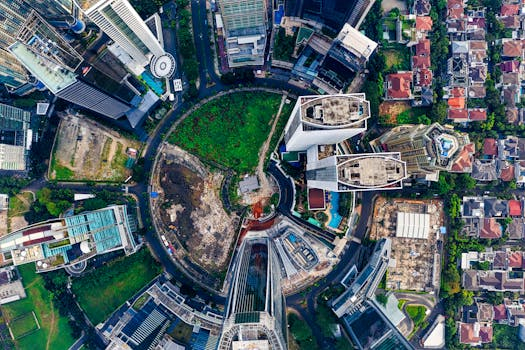Zoning Law Overhauls: Cities Embrace Mixed-Use Developments
Over the past decade, there has been a significant shift in city planning and development strategies. The traditional practice of dividing cities into distinct zones for residential, commercial, and industrial purposes has been challenged and, in some cases, completely overhauled. This new approach, known as mixed-use development, has gained momentum in cities across the US, with many local governments making significant changes to their zoning laws and regulations to embrace this new trend. In this article, we will explore the concept of mixed-use developments and the zoning law overhauls that have taken place as cities increasingly embrace this new approach to urban planning.
The Rise of Mixed-Use Developments
Mixed-use developments are characterized by the combination of different land uses within a single development project. These developments typically include a mix of residential, commercial, and sometimes even industrial uses, all coexisting in the same building or complex. The idea behind mixed-use developments is to create vibrant, diverse, and livable communities where people can live, work, shop, and play without having to travel far.
The concept of mixed-use developments first gained traction in the 1920s when cities like New York, Chicago, and Philadelphia saw a rise in the development of multi-story skyscrapers. However, it wasn’t until the 1960s and 1970s that these developments really took off, thanks to the influential urban planner Jane Jacobs, who advocated for diverse and mixed-use neighborhoods. Today, mixed-use developments are considered a key component of smart growth and sustainable urban planning.
Zoning Law Overhauls to Accommodate Mixed-Use Developments
As cities continue to grow, the traditional zoning laws that divided cities into separate zones for different uses have become outdated and restrictive. Local governments are realizing the benefits of mixed-use developments, not just in terms of creating vibrant and livable communities, but also in terms of economic development and environmental sustainability. As a result, many cities have embarked on overhauling their zoning laws to accommodate and encourage mixed-use developments.
One of the main changes in zoning laws is the incorporation of more flexible zoning districts that allow for a mix of uses within a single area. In the past, zoning laws were often strict and specific, dictating exactly what types of uses were allowed in a given area. Now, with flexible zoning, developers have more options to mix and match different uses, such as residential units on top of retail stores or office spaces within a residential building.
Some cities have also implemented form-based zoning codes, which focus on the physical character of a development rather than the use. This allows for more creative and mixed-use developments that are also aesthetically pleasing and fit in with the character of the neighborhood.
The Benefits of Mixed-Use Developments
The rise of mixed-use developments is not without reason. There are numerous benefits that this type of development brings to cities and its residents.
Economic Benefits
Mixed-use developments create a more diverse and active economy by providing a variety of job opportunities in different sectors. This also means that residents have a range of employment options within walking distance, reducing the need to commute long distances.
Social Benefits
By providing a mix of uses, mixed-use developments create a sense of community and foster social interaction. Residents can socialize and connect with others while shopping, working, or simply walking around the neighborhood. This can lead to a stronger sense of belonging and a more cohesive community.
Environmental Benefits
Mixed-use developments promote walkability and can reduce the reliance on cars, leading to lower emissions and a more sustainable community. By incorporating green spaces and sustainable design, these developments can also contribute to a healthier and more environmentally-friendly neighborhood.
The Future of Urban Development
As cities continue to grow and evolve, mixed-use developments are becoming increasingly popular. They offer a solution to many of the challenges faced by traditional zoning laws and contribute to creating more livable and sustainable cities. As local governments continue to embrace this trend and make necessary changes to zoning laws, we can expect to see even more mixed-use developments in our cities in the near future.
Conclusion
Zoning law overhauls to accommodate mixed-use developments are a clear indication of the changing landscape of city planning and development. By embracing these developments, cities are creating more livable, vibrant, and sustainable communities for their residents. From economic to social and environmental benefits, there are numerous advantages to mixed-use developments, making them the future of urban development.







